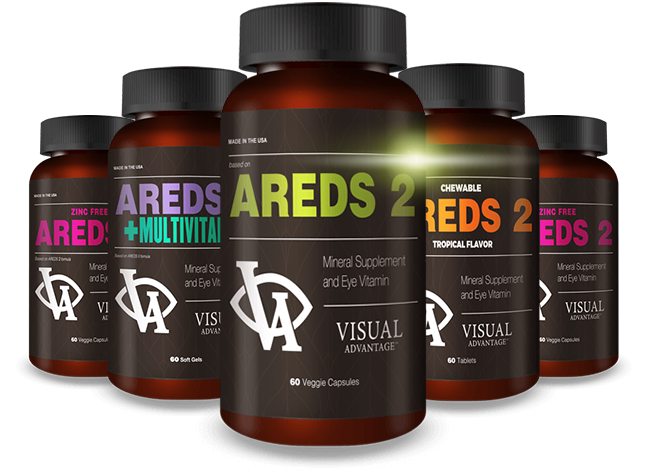WHAT IS MACULAR DEGENERATION

Age-related macular degeneration, AMD, is an eye disease that has been deemed the leading cause of vision loss in the United States. With more than ten million Americans suffering from AMD, it affects more people than glaucoma and cataracts combined. This eye disease causes central vision loss, which impacts how you see fine details of objects, read, drive a car, and recognize faces. AMD affects the middle portion of the retina, known as the macula. The macula detects images and sends them to the brain through the optic nerve. With AMD, the central vision loss causes the image to lose its center, making it difficult to determine what is being viewed. Unfortunately, there is no cure to this eye disease, but there are things you can do to ensure your eyes are healthy. After following along with this article, you will understand AMD and learn what preventative measures you can take to decrease your risk or slow the disease progression.
What Are the Different Types of AMD
There are two types of AMD: dry and wet. Dry AMD is the most common form, which presents itself as small yellow deposits (drusen) under the retina. These deposits are known as waste products of the retina that can grow and interrupt nutrients from reaching the retina. Once those deposits block the flow of nutrients to the retina, they cause cell death in the macula, the part of the eye that processes light. Eventually, vision will become blurred.
Dry AMD
Dry AMD occurs in the following stages:
-
Early Stage
Small or medium sized drusen are present with no signs of vision loss.
-
Intermediate Stage
Multiple medium sized drusen are present and possibly some larger sized ones. This is where some people may experience blurred center vision and need additional light when focusing on objects such as reading a book. With this stage, individuals are at a greater risk for progressing to the advanced stage of dry AMD and also wet AMD.
-
Advanced Stage
The time where central vision develops a blind spot. This is the point where people may have trouble reading or recognizing faces.
Wet AMD
Wet AMD is less common, it can progress more rapidly than dry AMD and cause more intense vision loss. With wet AMD, small blood vessels form beneath and within the retina. These blood vessels are fragile and can break easily, causing a leak, which leads to vision loss.
What Causes Macular Degeneration
It is currently unclear as to what exactly causes AMD, but the research that has been conducted suggests it includes both hereditary and environmental causes. The following factors can increase one’s risk for developing AMD:
- Family history of AMD
- Obesity
- Increased sun exposure
- Over the age of 60 years
- High cholesterol
- Smoking
- High blood pressure
- Cardiovascular disease
- Bad Diet (low in fruits and vegetables)
- Caucasian (highest risk of all races)
- Eyes that are lightly colored
What Are the Signs and Symptoms of Macular Degeneration?

You may not exhibit symptoms with the early stage of dry AMD, while wet AMD can progress rather quickly. Therefore, it is important to contact your doctor as soon as you experience vision changes. Here are just some symptoms experienced with AMD:
- Vision is blurred or fuzzy
- There is a gray, dark, or empty spot in the center of vision
- Straight lines appear wavy
- Colors appear lighter and paler
- Objects seem smaller than they really are

How Can I Prevent Macular Degeneration
While the causes of AMD are not clear to medical professionals, there are important steps you can take that can potentially decrease your risk of developing AMD. Unfortunately, we cannot change the fact that everyone ages, but here are some healthy habits to include in your life that can help fight against AMD:
- Reach and/or maintain a healthy weight
- Wear protective gear outside such as sunglasses and a hat
- Complete regular exercise
- Quit smoking
- Control blood pressure
- Consume a diet rich in green, leafy vegetables fruit, fish, and whole grains
- Keep annual eye exams, and call your doctor if vision changes
How Can Macular Support Vitamins Help Me?

Macular Support is a vitamin that consists of zeaxanthin and lutein, which are both powerful antioxidants found within the eyes. These vitamins are doctor recommended for maintaining optimal macular health. They have been proven to slow the progression of AMD and potentially decrease one’s risk. Our line of Macular Support vitamins offers you a range of options that meet your medical needs, such as easy to pull apart veggie caps and chewable vitamins. Including Macular Support in your daily routine can help combat against AMD and maintain your macular health. AMD can be a serious threat to your eyes and to your vision. Know the signs and symptoms so that you can take action to protect your sight.
